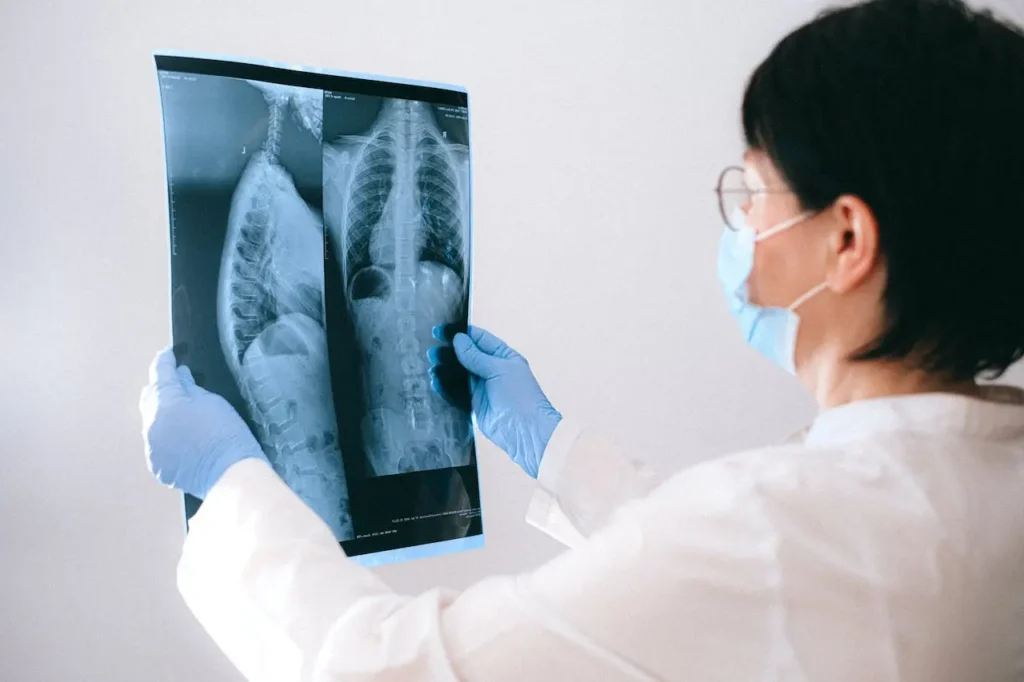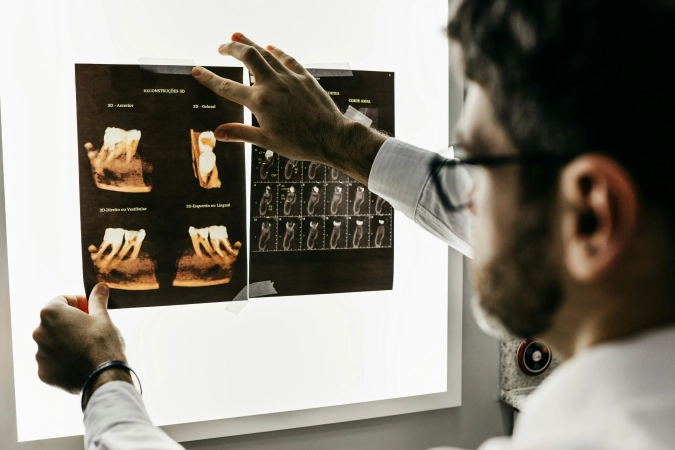COPD ICD 10: Your Ultimate Respiratory Health Care Guide

- Understanding COPD and ICD 10
- COPD ICD 10 Codes and Documentation Guidelines
- COPD Friendly Exercises for Seniors
- Oxygen Therapy at Home for the Elderly
- Caregiving Tips for COPD Patients
- Managing COPD Medications Effectively
- Respiratory Exercises for Seniors with COPD
- Home Care Tips for COPD Patients
- Preventing COPD Exacerbations: Tips for Caregivers
- Resources and Support
- Conclusion
- Frequently Asked Questions (FAQs)
Understanding COPD and ICD 10
This post may contain affiliate links, meaning I may earn a commission if you make a purchase, at no extra cost to you. I only recommend products I trust. Thank you for your support.
Chronic Obstructive Pulmonary Disease (COPD) is a progressive lung disease that affects millions of people around the world.
It is a chronic condition that causes breathing difficulties and can significantly impact a person’s quality of life.
To effectively manage and treat Chronic Obstructive Pulmonary Disease, accurate coding using the International Classification of Diseases, Tenth Revision (ICD-10) is crucial.
Understanding the relationship between COPD and ICD-10 is essential for healthcare providers and caregivers alike.
Proper coding of Chronic Obstructive Pulmonary Disease allows for accurate diagnosis, treatment, and monitoring of the condition.
It provides valuable information for healthcare professionals, insurance companies, and researchers.
With accurate coding, healthcare providers can determine the severity of COPD, track its progression, and provide appropriate care.
For caregivers, understanding the coding system can help them navigate the healthcare system more effectively and ensure their loved ones receive the best possible care.
Here are some key points to understand the importance of proper coding for COPD:
- Accurate Diagnosis: Proper coding ensures that the correct diagnosis of COPD is recorded in medical records, allowing for appropriate treatment plans and interventions.
- Reimbursement: Accurate coding is crucial for billing and reimbursement purposes. Healthcare providers need to use the correct codes to receive payment for their services.
- Research and Statistics: Accurate coding provides valuable data for research and statistical analysis, helping researchers understand the prevalence, risk factors, and outcomes of COPD.
- Monitoring and Evaluation: Proper coding allows healthcare providers to track the progress of COPD, evaluate the effectiveness of treatments, and adjust care plans accordingly.
COPD ICD 10 Codes and Documentation Guidelines
Proper coding of COPD involves using specific ICD-10 codes that accurately represent the condition.
Here are five examples of commonly used COPD ICD 10 codes:
- J44.0 – Chronic obstructive pulmonary disease with acute lower respiratory infection
- This code is used when a patient with COPD develops an acute lower respiratory infection, such as pneumonia.
- Link to J44.0 ICD-10 code details
- J44.1 – Chronic obstructive pulmonary disease with (acute) exacerbation
- This code is used when a patient with COPD experiences an exacerbation of their symptoms, such as increased coughing, wheezing, and shortness of breath.
- Link to J44.1 ICD-10 code details
- J44.9 – Chronic obstructive pulmonary disease, unspecified
- This code is used when the specific type or cause of COPD is not specified in the medical records.
- Link to J44.9 ICD-10 code details
- J43.9 – Emphysema, unspecified
- This code is used when the medical records indicate the presence of emphysema, a common form of COPD, but do not provide further details.
- Link to J43.9 ICD-10 code details
- J44.8 – Other specified chronic obstructive pulmonary disease
- This code is used when a specific type of COPD is mentioned in the medical records, but it is not one of the commonly classified types.
- Link to J44.8 ICD-10 code details
Remember, accurate documentation is just as important as accurate coding. Medical records should include detailed information about the patient’s symptoms, test results, and treatment plans.
This documentation helps healthcare providers and insurance companies understand the severity and progression of Chronic Obstructive Pulmonary Disease.
COPD Friendly Exercises for Seniors
Regular exercise is crucial for managing Chronic Obstructive Pulmonary Disease and improving respiratory health.
However, it’s essential to choose COPD-friendly exercises that are safe for seniors.
Here are some examples of COPD-friendly exercises:
- Walking: Brisk walking is a low-impact exercise that helps improve cardiovascular fitness and strengthen the leg muscles. It can be done outdoors or on a treadmill, depending on the individual’s preference and ability.
- Cycling: Cycling on a stationary bike is another excellent option for seniors with COPD. It provides a good cardiovascular workout without putting excessive strain on the joints.
- Swimming: Swimming or water aerobics are highly recommended for seniors with COPD. The buoyancy of water reduces the impact on the joints while providing a full-body workout.
- Yoga: Yoga is a gentle form of exercise that focuses on breathing techniques, stretching, and relaxation. It can help improve lung function, reduce stress, and enhance overall well-being.
- Strength Training: Light strength training exercises using resistance bands or light weights can help improve muscle strength and endurance.
Remember to consult with a healthcare professional before starting any exercise program, especially for individuals with Chronic Obstructive Pulmonary Disease.
They can provide personalized recommendations and ensure the exercises are safe and appropriate for the individual’s specific needs.
Oxygen Therapy at Home for the Elderly
For some elderly individuals with Chronic Obstructive Pulmonary Disease, oxygen therapy at home may be necessary to ensure adequate oxygen levels in the blood.
Oxygen therapy can be administered at home, allowing seniors to receive the necessary oxygen support while continuing their daily activities.

Here are some important aspects of oxygen therapy at home:
1. Prescription and Equipment
Oxygen therapy requires a prescription from a healthcare provider.
The prescription specifies the flow rate and duration of oxygen therapy.
The necessary equipment, such as an oxygen concentrator or portable oxygen tank, is then provided.
2. Safety Considerations
It’s crucial to follow safety guidelines while using oxygen therapy at home.
Oxygen is highly flammable, so smoking and open flames should be strictly prohibited in the vicinity of the oxygen source.
Regular inspections and maintenance of the equipment are also necessary to ensure safe and effective oxygen delivery.
3. Mobility and Travel
Portable oxygen concentrators allow for increased mobility and travel for seniors on oxygen therapy.
These lightweight devices can be easily carried and provide a continuous supply of oxygen, even when away from home.
4. Monitoring and Maintenance
Regular monitoring of oxygen levels and proper maintenance of the equipment are essential for effective oxygen therapy.
Seniors and their caregivers should be trained on how to use and maintain the equipment correctly.
It’s important for caregivers to understand the specific requirements and guidelines for oxygen therapy at home.
They should work closely with healthcare providers to ensure proper administration and monitor the effectiveness of the therapy.
Caregiving Tips for COPD Patients
Being a caregiver for someone with Chronic Obstructive Pulmonary Disease can be challenging, but with the right knowledge and support, it can also be rewarding.
Here are some caregiving tips to help you provide the best possible care for a loved one with COPD:
Educate Yourself
Learn as much as you can about COPD, its symptoms, treatments, and management strategies. Understanding the condition will help you better support and advocate for your loved one.
1. Create a COPD-Friendly Environment
Make the home environment conducive to managing COPD.
This includes keeping the living space clean, free of allergens and irritants, and maintaining a comfortable temperature and humidity level.
2. Encourage Medication Adherence
Help your loved one stay on top of their medication regimen.
Set up a medication schedule, use pill organizers, and remind them to take their medications as prescribed.
3. Promote Healthy Lifestyle Habits
Encourage your loved one to adopt a healthy lifestyle that includes a balanced diet, regular exercise, and stress management techniques.
Offer support and participate in these activities together.
4. Provide Emotional Support
COPD can be emotionally challenging for both the patient and the caregiver.
Be a source of emotional support and understanding for your loved one.
Encourage open communication and provide reassurance.
5. Plan for Emergencies
Develop a plan for emergencies, including knowing when to seek medical help.
Having emergency contact numbers readily available, and ensuring access to necessary medical records and documents.
Managing COPD Medications Effectively
Medications play a vital role in managing Chronic Obstructive Pulmonary Disease symptoms and preventing exacerbations.
Here are some essential considerations for effective medication management:
1. Understand the Medications
Learn about the medications prescribed for COPD, including their purpose, dosage, and potential side effects.
This knowledge will help you identify any issues or concerns related to the medications.
2. Follow the Medication Schedule
Establish a consistent medication schedule and remind the patient to take their medications as prescribed.
Use pill organizers or medication reminder apps to help them stay on track.
3. Proper Inhaler Technique
Inhalers are commonly used for COPD management. Ensure that the patient knows how to use their inhaler correctly.
Review the proper inhaler technique with them and address any questions or concerns they may have.
4. Refill Medications in a Timely Manner
Keep track of medication supplies and ensure that prescriptions are refilled before they run out.
Avoid any gaps in medication availability to maintain consistent treatment.
5. Communicate with Healthcare Providers
Regularly communicate with the healthcare provider responsible for managing the patient’s COPD to discuss any concerns or changes in symptoms.
Be proactive in seeking clarification or adjustments to the medication regimen if necessary.
Respiratory Exercises for Seniors with COPD
Respiratory exercises can help strengthen the muscles involved in breathing, improve lung function, and enhance overall respiratory health for seniors with Chronic Obstructive Pulmonary Disease.

Here are some examples of respiratory exercises:
1. Diaphragmatic Breathing
- Also known as belly breathing, diaphragmatic breathing involves inhaling deeply through the nose, allowing the abdomen to rise, and exhaling slowly through pursed lips.
- This exercise helps improve the efficiency of breathing and reduces shortness of breath.
2. Pursed Lip Breathing
- Pursed lip breathing involves inhaling deeply through the nose and exhaling slowly through pursed lips, as if blowing out a candle.
- This technique helps slow down breathing, improve airflow, and reduce breathlessness.
3. Lateral Costal Breathing
- Lateral costal breathing focuses on expanding the ribcage during inhalation and allowing it to relax during exhalation.
- Place your hands on the sides of your ribcage and inhale deeply, feeling the expansion.
- Exhale fully, allowing the ribcage to return to its resting position.
4. Segmental Breathing
- Segmental breathing involves focusing on different areas of the lungs during inhalation and exhalation.
- Start by placing your hands on your lower ribs. Inhale deeply, feeling the expansion of the lower ribs.
- Exhale fully, allowing the ribs to relax.
- Repeat this exercise, gradually moving your hands to the middle and upper ribs.
5. Paced Breathing
- Paced breathing involves counting the duration of inhalation and exhalation to promote slow and controlled breathing.
- Start by inhaling for a count of two, then exhale for a count of four.
- Gradually increase the duration of inhalation and exhalation as tolerated.
Remember to consult with a healthcare professional before starting any respiratory exercise program.
They can provide guidance on the appropriate exercises and techniques for individual needs and ensure they are performed safely.
Home Care Tips for COPD Patients
Caring for someone with Chronic Obstructive Pulmonary Disease can be challenging, but with the right knowledge and strategies, you can provide effective care and support.
Here are some essential home care tips that can greatly improve their quality of life.
1. Ensure a COPD-friendly environment:
- To create a safe and comfortable home environment for patients, it is crucial to eliminate potential triggers such as smoke, dust, and strong odors.
- Ensure proper ventilation and use air purifiers if necessary.
- Keep the house clean and free of allergens, and consider using hypoallergenic bedding and furniture.
2. Encourage regular physical activity:
- Physical activity plays a vital role in managing COPD.
- Encourage your loved one to engage in friendly exercises for seniors, such as walking, swimming, or stationary cycling.
- These activities help improve lung function, strengthen muscles, and enhance overall well-being.
- Always consult with a healthcare professional before starting any exercise program.
3. Monitor oxygen therapy at home:
- If your loved one requires oxygen therapy at home, it is important to ensure its proper usage and maintenance.
- Regularly check the oxygen concentrator or cylinder for any signs of malfunction.
- Educate yourself on the correct flow rate and how to troubleshoot common issues.
- Additionally, ensure that the oxygen supply is stored safely and away from potential hazards.
4. Assist with medications management:
- Patients often require multiple medications to manage their symptoms and prevent exacerbations.
- As a caregiver, it is essential to understand the prescribed medications, their dosages, and the correct administration techniques.
- Help your loved one organize their medications, set reminders, and ensure they adhere to their medication schedule.
- Regularly communicate with their healthcare provider to address any concerns or changes in medication needs.
5. Encourage respiratory exercises:
- Respiratory exercises are beneficial for patients as they help strengthen the respiratory muscles and improve lung capacity.
- Simple techniques like deep breathing exercises, pursed-lip breathing, and diaphragmatic breathing can make a significant difference in managing symptoms.
- Encourage your loved one to practice these exercises regularly and consider enrolling them in pulmonary rehabilitation programs for additional support.
Preventing COPD Exacerbations: Tips for Caregivers
COPD exacerbations are episodes when a person’s symptoms worsen suddenly, leading to increased breathlessness, coughing, and wheezing.
These exacerbations can be distressing for both the patient and the caregiver.
Here are some valuable tips to help caregivers prevent exacerbations and minimize their impact.
1. Promote good hand hygiene
- Respiratory infections can trigger exacerbations. Encourage regular hand washing for both you and your loved one to reduce the risk of infections.
- Use hand sanitizers when soap and water are not readily available.
- Avoid close contact with individuals who have respiratory infections, and ensure everyone in the household receives annual flu vaccinations.
2. Maintain a clean and dust-free environment
- Keeping the living space clean and free of dust can significantly reduce the risk of exacerbations.
- Regularly dust surfaces, vacuum carpets and upholstery, and change air filters in heating and cooling systems.
- Consider using hypoallergenic and dust mite-proof bedding to further minimize exposure to allergens.
3. Ensure a smoke-free environment
- Smoking is the leading cause of COPD, and exposure to secondhand smoke can worsen symptoms and trigger exacerbations.
- Maintain a strict smoke-free policy in the home and encourage your loved one to quit smoking if they haven’t already.
- Provide support and resources to help them in their journey towards a smoke-free life.

4. Monitor air quality
- Keep an eye on air pollution levels in your area, as high levels of pollutants can exacerbate COPD symptoms.
- On days when the air quality is poor, limit outdoor activities and keep windows and doors closed.
- Consider using air purifiers with HEPA filters to improve indoor air quality.
5. Encourage regular medical check-ups
- Regular check-ups with healthcare professionals are essential for managing COPD and preventing exacerbations.
- Ensure your loved one attends all scheduled appointments and follow their prescribed treatment plan.
- Stay informed about any changes in medications, therapies, or lifestyle recommendations to provide appropriate support and care.
Resources and Support
Caring for someone with Chronic Obstructive Pulmonary Disease can be overwhelming at times, and it’s important to remember that you’re not alone.
Several organizations provide valuable resources, support, and information to caregivers and patients.
Here are five organizations that offer assistance:
1. American Lung Association (www.lung.org)
The American Lung Association offers educational resources, support groups, and advocacy for COPD patients and caregivers.
They also provide assistance in finding local healthcare providers and support services.
2. COPD Foundation (www.copdfoundation.org)
This organization focuses on improving the lives of individuals affected by COPD through education, research, and advocacy.
They offer online forums, educational materials, and access to clinical trials.
3. National Heart, Lung, and Blood Institute (www.nhlbi.nih.gov)
The National Heart, Lung, and Blood Institute provides comprehensive information on COPD, including treatment guidelines, research updates, and educational materials for patients and caregivers.
4. Caregiver Action Network (www.caregiveraction.org)
The Caregiver Action Network offers support and resources for caregivers of individuals with various health conditions, including COPD.
They provide educational materials, online support groups, and a helpline for assistance.
5. Respiratory Health Association (www.resphealth.org)
The Respiratory Health Association focuses on promoting lung health and supporting individuals affected by lung diseases.
They offer educational programs, support groups, and resources for patients and caregivers.
Conclusion
Caring for someone with COPD requires knowledge, patience, and a caring heart.
By following the home care tips, preventing exacerbations, and utilizing the resources available, you can significantly improve the well-being and quality of life for your loved one with COPD.
Remember to seek support when needed and take care of yourself as well.
Together, we can unlock the code to better respiratory health and provide the best possible care for Chronic Obstructive Pulmonary Disease patients.
What is the respiratory therapist salary in United States?
Are you searching for a compassionate and experienced caregiver, feel free to contact me.
Learn more about respiratory therapy, nurse practitioner, comfort care or palliative care, benefits of therapy dogs, botox for migraines, and memory care in seniors.
Frequently Asked Questions (FAQs)
What are the recommended treatment guidelines for COPD?
Chronic Obstructive Pulmonary Disease treatment guidelines typically include bronchodilators, inhaled corticosteroids, pulmonary rehabilitation, and lifestyle modifications. Consult your healthcare provider for personalized recommendations.
Is there a cure for COPD?
Currently, there is no cure for COPD. However, effective management strategies and treatments can help control symptoms and improve quality of life.
How is COPD diagnosed?
COPD is diagnosed through a combination of medical history, physical examination, lung function tests, and imaging studies. The ICD-10 code for COPD is J44.
How often should COPD patients see their healthcare provider?
COPD patients should follow their healthcare provider’s recommendations for regular check-ups and monitoring. The frequency may vary based on the severity of the condition and individual needs.
What is the significance of the ICD-10 code for COPD?
The ICD-10 code, J44, is essential for accurate medical coding and billing. It helps standardize the classification of COPD for healthcare records and facilitates communication among healthcare professionals.
Note: This article is for informational purposes only and should not be taken as medical or legal advice. It is always recommended to consult with healthcare professionals and legal experts for specific situations.




